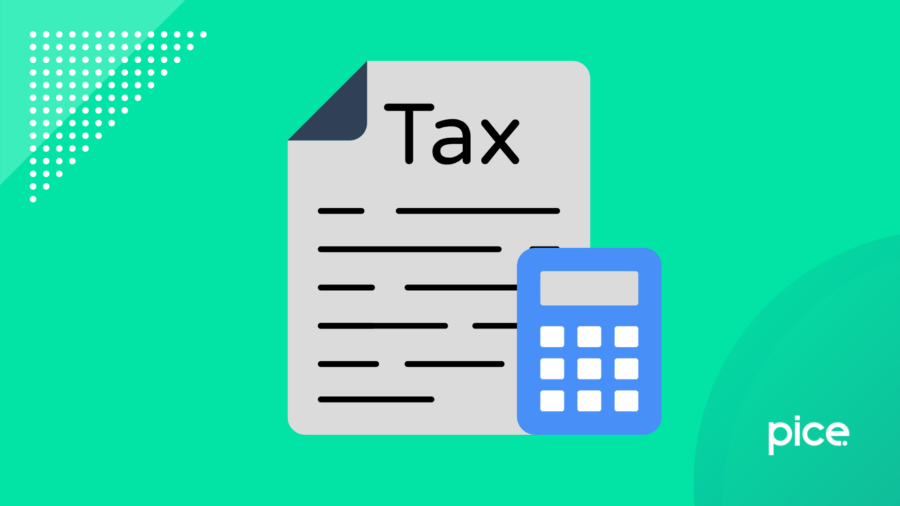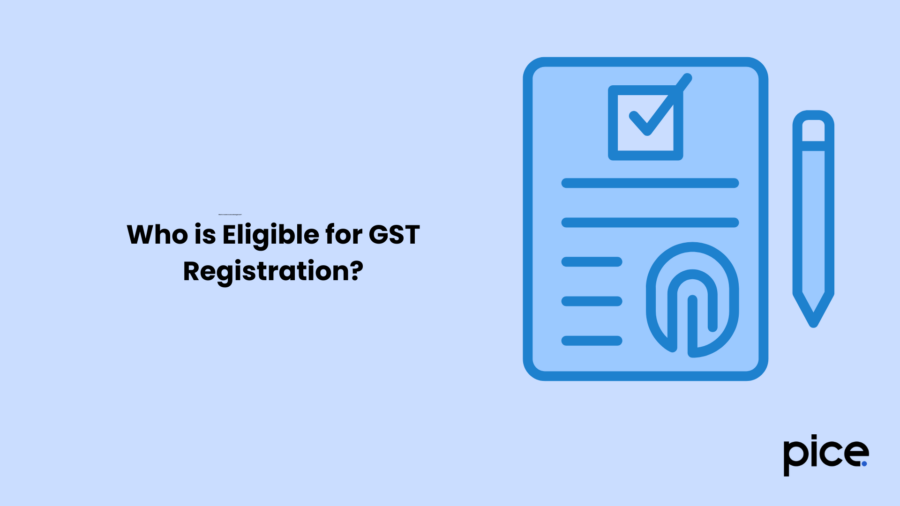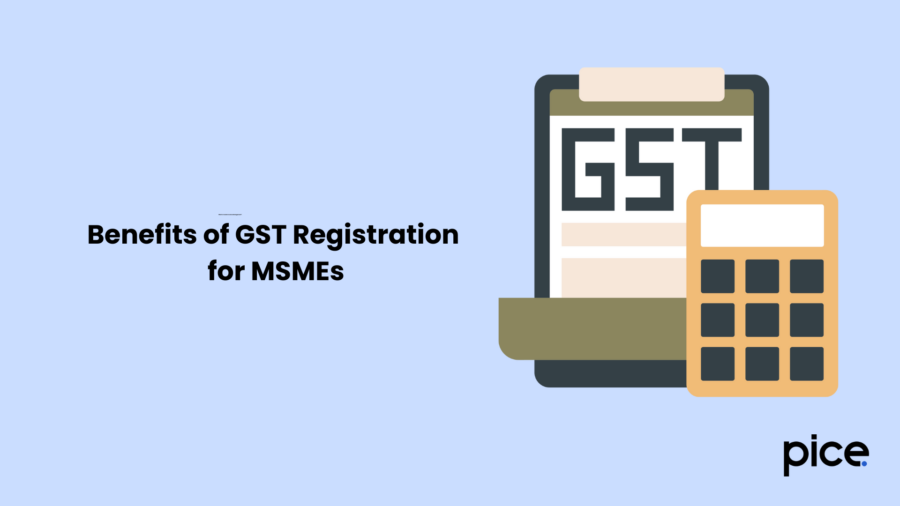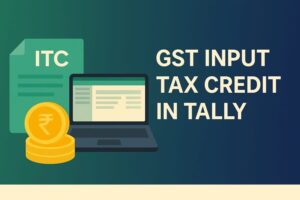An Overview on Importance of GST Registration for MSMEs
- 15 May 25
- 7 mins

An Overview on Importance of GST Registration for MSMEs
Key Takeaways
- GST simplifies taxes for MSMEs, replacing multiple levies.
- Registration types vary by turnover and business model.
- GSTIN is needed only if turnover exceeds set limits.
- Enables growth via wider market access and government schemes.
- Improves credibility with lenders and investors.
The Government of India has introduced the Goods and Services Tax (GST) with the objective of unifying the country’s complex tax system into a single indirect tax. Such a transformation gave much-needed clarity and operational ease to the Micro, Small, and Medium Enterprises (MSMEs).
From a situation where these MSMEs had to pass through various tax regimes like VAT, excise duty, and service tax, they can now spend their time on business compliances, growth strategies, and optimising their complete supply chain solution.
This article looks at GST registration for MSMEs and discusses the process of obtaining GST registration certificates and their relevance to further aspects like vendor management, loan applications, and direct tax compliance.
Micro, Small, and Medium Enterprises (MSMEs)

The MSME Development Act, 2006 defines MSMEs based on equipment investment and service criteria. These enterprises play a critical role in economic development, innovation, and employment generation.
Manufacturing Sector:
- Micro Enterprises: Investment in plant and machinery not exceeding ₹25 lakhs.
- Small Enterprises: Investment between ₹25 lakhs and ₹5 crores.
- Medium Enterprises: Investment between ₹5 crores and ₹10 crores.
Services Sector:
- Micro Enterprises: Investment not exceeding ₹10 lakhs.
- Small Enterprises: Investment between ₹10 lakhs and ₹2 crores.
- Medium Enterprises: Investment between ₹2 crores and ₹5 crores.
When registering, enterprises must provide details on investment, turnover details, and other financial particulars, especially if they intend to avail credit facilities, ERP e-TDS return filing solution, or participate in platforms like the government e-marketplace.
Types of GST Registration Applicable to MSMEs
Understanding which GST category applies to your enterprise is crucial for ensuring secretarial compliance and avoiding penalties.
- Composition Scheme Taxpayer: Suitable for small traders and manufacturers with turnover below ₹1.5 crore. Lower GST rates (1% for traders, 2% for manufacturers) apply.
- Casual Taxable Person: Seasonal businesses that operate temporarily. Registration is valid for 90 days.
- Regular Taxpayer: For businesses exceeding the threshold turnover and looking for consistent operations, vendor payments, and vendor delight.
Is GSTIN Required for MSME Registration?
A GSTIN (GST Identification Number) is not mandatory for every MSME registering on the Udyam portal. However, any enterprise exceeding prescribed turnover thresholds must complete GST return filing and obtain a GSTIN. The applicability also varies depending on the type of supply (goods or services) and the state of operation.
Thresholds for Goods Suppliers:
- ₹10 lakhs in Tripura, Manipur, Mizoram, and Nagaland.
- ₹20 lakhs in states like Uttarakhand, Telangana, Sikkim, etc.
- ₹40 lakhs in other states.
Thresholds for Services or Mixed Supplies:
- ₹10 lakhs in certain northeastern states.
- ₹20 lakhs in other parts of India.
If you are planning investments to government schemes, participating in consumer products distribution, or expanding to new states, a GSTIN is essential for smooth cross-border operations and compliance.
Who is Eligible for GST Registration?

Before you go to the required documents and the application process, it is better to be aware of the eligibility criteria for GST registration as discussed below:
- Sole proprietors.
- Any business with annual turnover above ₹40 lakhs (goods) or ₹20 lakhs (services).
- E-commerce sellers (regardless of turnover).
- Casual taxpayers.
- Inter-state suppliers.
If you are a managing partner of a firm involved in connected finance ecosystem solutions, GST registration is also key for improving financial transparency and securing funding.
Documents Required for GST Registration
To secure your GST registration certificate, MSMEs must submit the following documents:
- PAN Card of the business and authorised signatories.
- Aadhaar Card of key personnel.
- Business registration documents such as a partnership deed or incorporation certificate.
- Proof of business address (rent agreement, utility bill, etc.).
- Bank account details (bank statement or cancelled cheque).
- Photographs of authorised signatories.
- Digital Signature Certificate (DSC) – especially for LLPs, private and public limited companies.
These documents also help when applying for bank loans, tax refunds, or registering with the ecosystem for process automation providers.
Online GST Registration Procedure
Follow these steps to complete your MSME GST registration process:
Step 1: Visit the official GST portal.
Step 2: Click on ‘New Registration’ and enter business and personal details.
Step 3: Verify OTP sent to your registered mobile and email to receive a Temporary Reference Number (TRN).
Step 4: Login using TRN and complete Part B of the application with business details.
Step 5: Upload all necessary documents including address proof and bank details.
Step 6: Verify and digitally sign the application using DSC.
Step 7: Receive an Application Reference Number (ARN) to track status.
A verified application ensures you’re ready for GST return filing, tax input claims, and seamless integration into digital finance ecosystems.
Benefits of GST Registration for MSMEs

If you are running an MSME, you must know about the below benefits you can avail while registering with GST:
- Lower Tax Burden
GST merged several indirect taxes into a single tax structure, effectively lowering the overall tax rate from 32% to around 18%–22%. This reduction enables MSMEs to redirect funds into expansion, technology upgrades, or supply chain improvements.
- Business Expansion
This helps MSMEs operate without barriers across India because of the GST, which will eliminate state-specific tax hurdles. It boosts easy interstate trading which encourages faster scaling for a business without being weighed down with multiple tax registrations and regulatory complexities.
- Input Tax Credit
Input tax credit is available for MSMEs for raw materials, services, and capital goods registered under GST. This lowers the cumulative tax cost and increases gross income, overall promoting competitiveness in both domestic and export markets.
- Expanded Market Access
GST registration is an entry requirement for such engagements in B2B contracts, vendor registrations, and government e-marketplaces. Thus, it provides opportunities for MSMEs to collaborate with the gigantic public sector or private sector enterprises, leading to better market access and exposure.
- Improved Creditworthiness
Regular filing of GST returns and payments of such dues gives a strong financial standing to the small enterprises. As a result, banks and non-banking finance companies will develop a trust factor in such entities and provide them with a better opportunity in the form of loans and credit lines and also of fintech-based working capital solutions within the ambit of formal credit mechanisms.
Conclusion
The legal registration of goods and services tax (GST) is for the clearing of the defined turnover limit for such enterprises. However, GST registration will go a long way and take such companies to financial independence, vendor satisfaction, and growth sustainability.
With simplified processes linked to other avenues like the Udyam Registration and ERP e-TDS return filing solution, it has cemented the foundation of MSME formalization in India.
Be it a business engaged in consumer goods, technical services, or manufacture, with GST compliance, it wins one more score in its compliance report and paves the way to access investments under different government schemes and availing of bank loans from a larger customer base.
💡If you want to streamline your invoices and make payments via credit or debit card or UPI, consider using the PICE App. Explore the PICE App today and take your business to new heights.
 By
By 

















